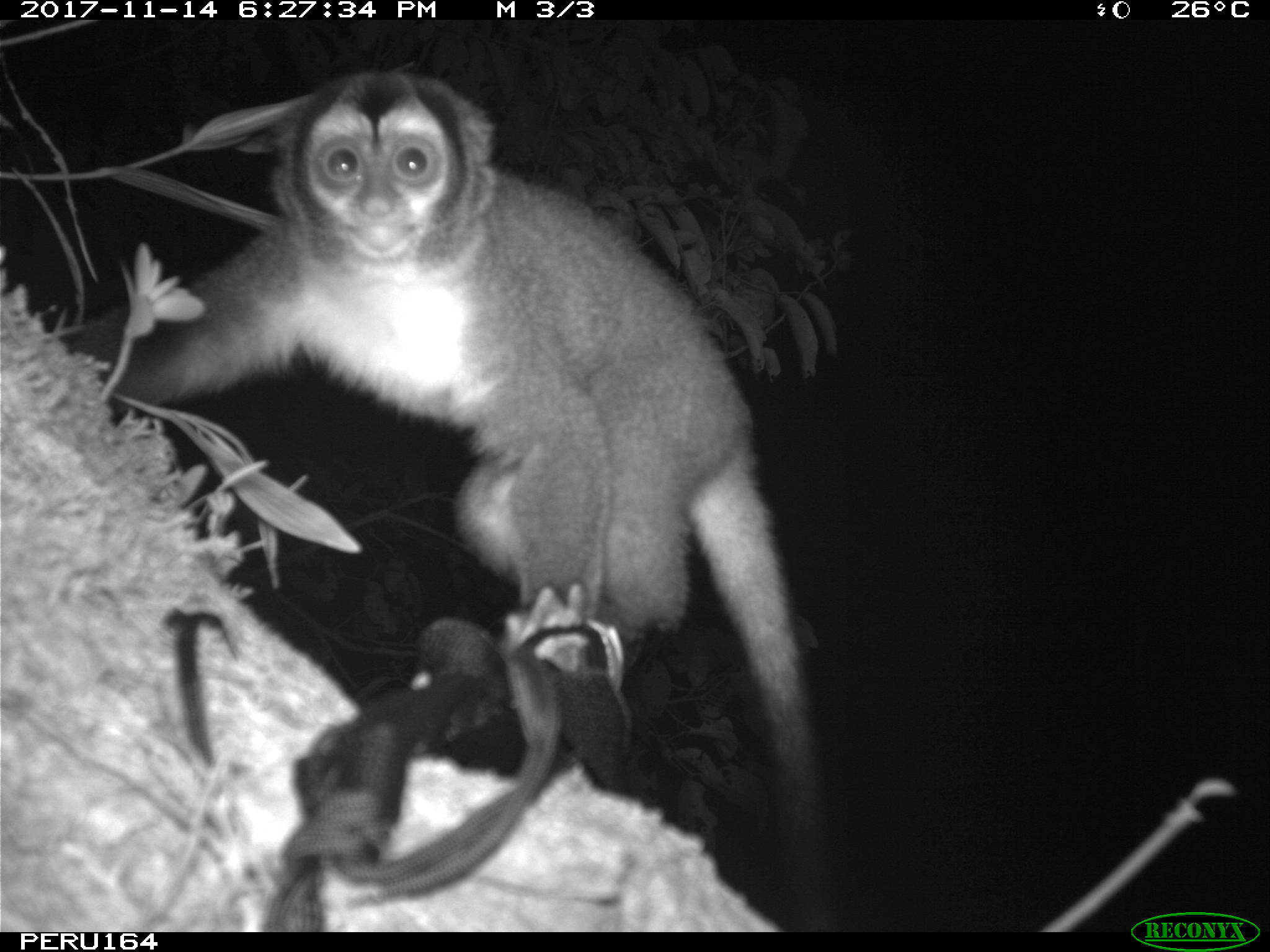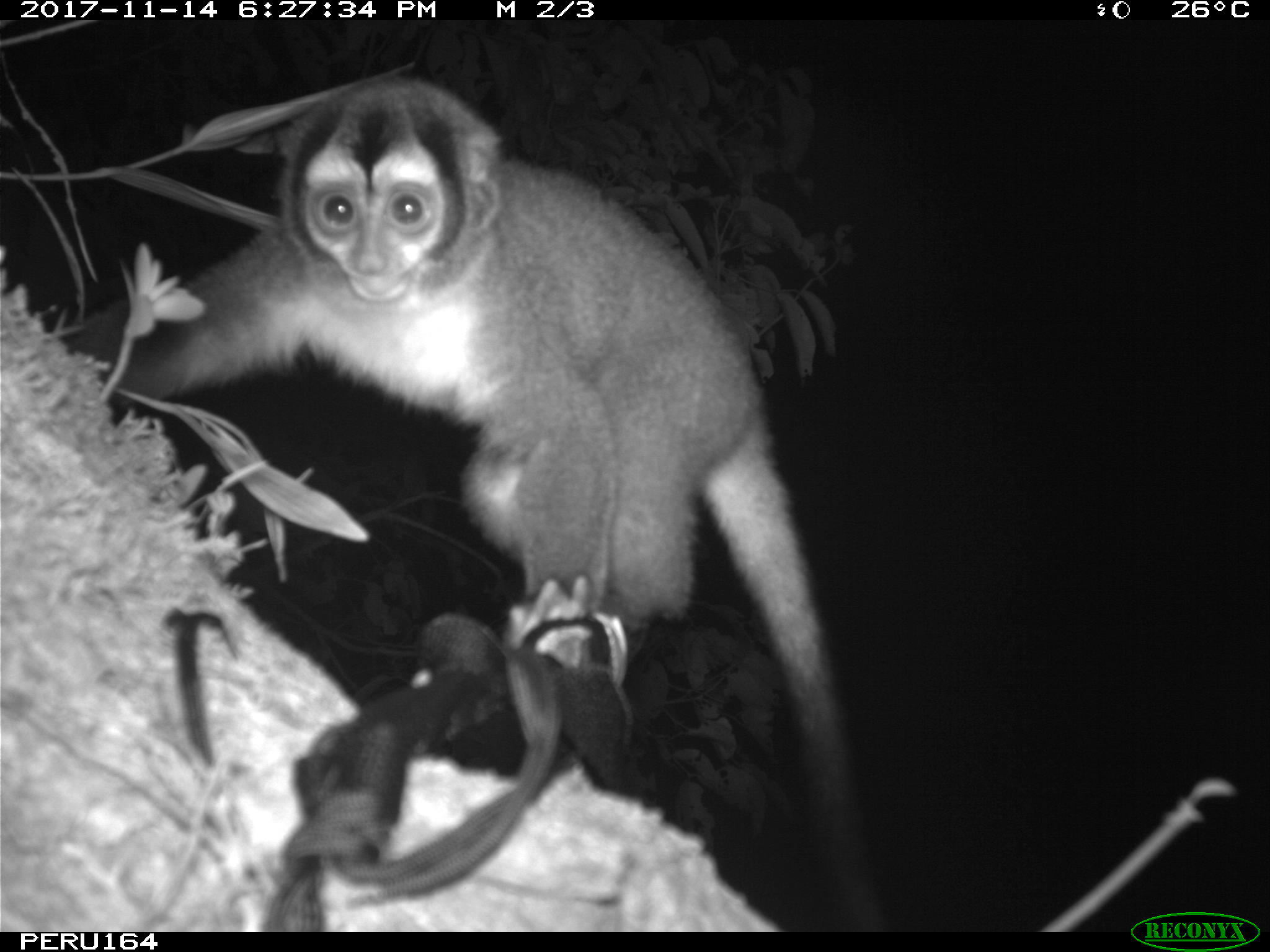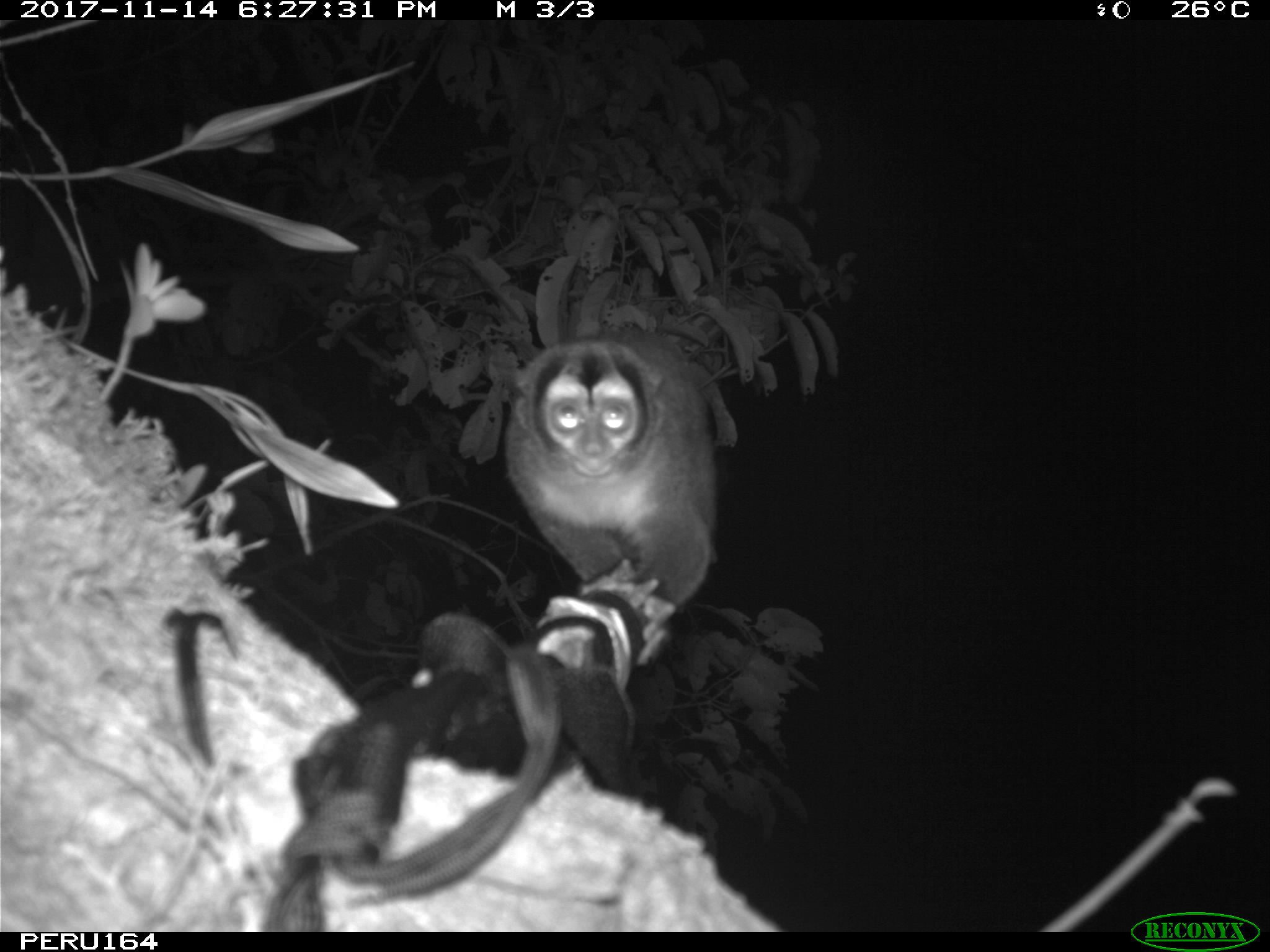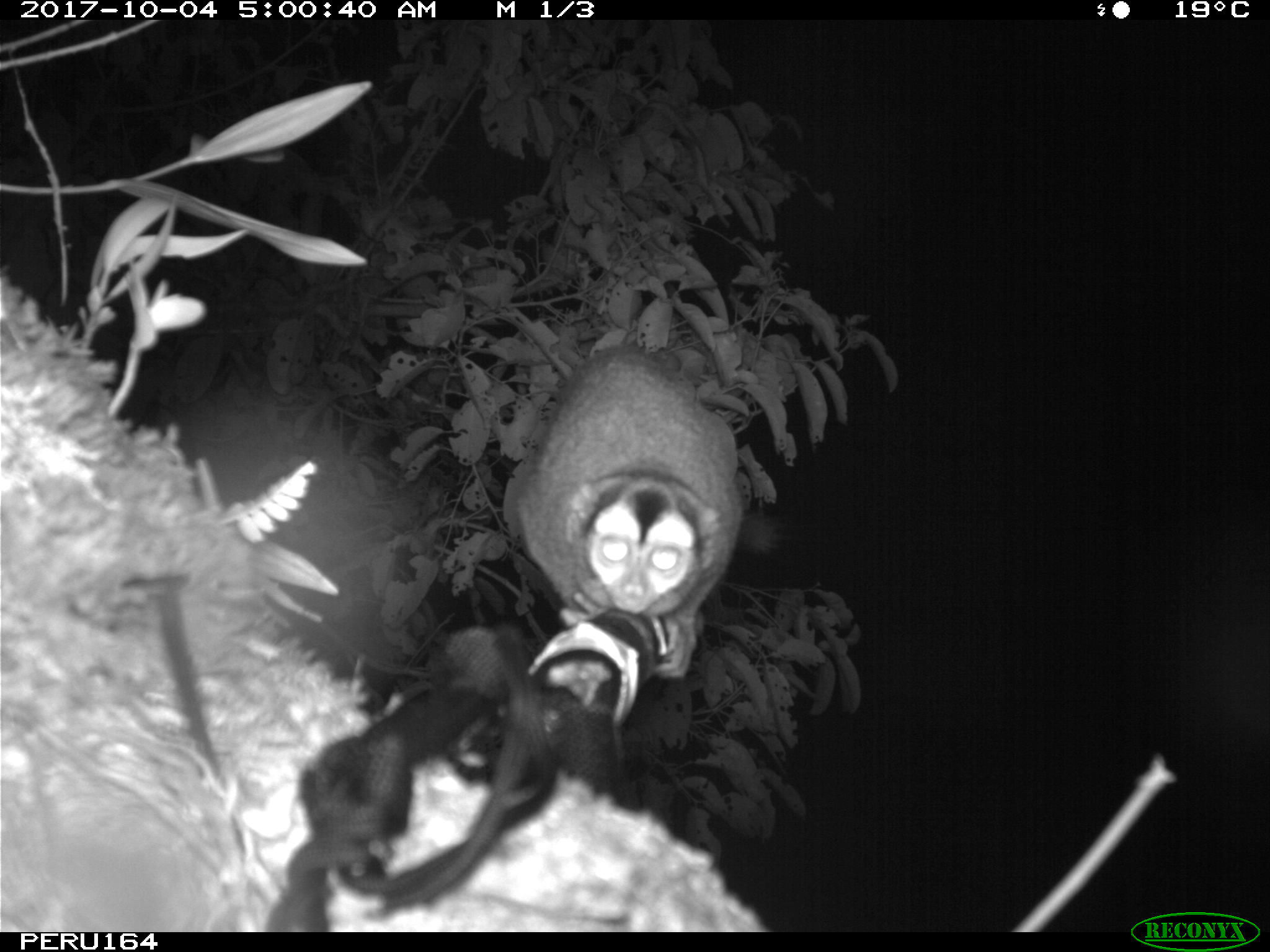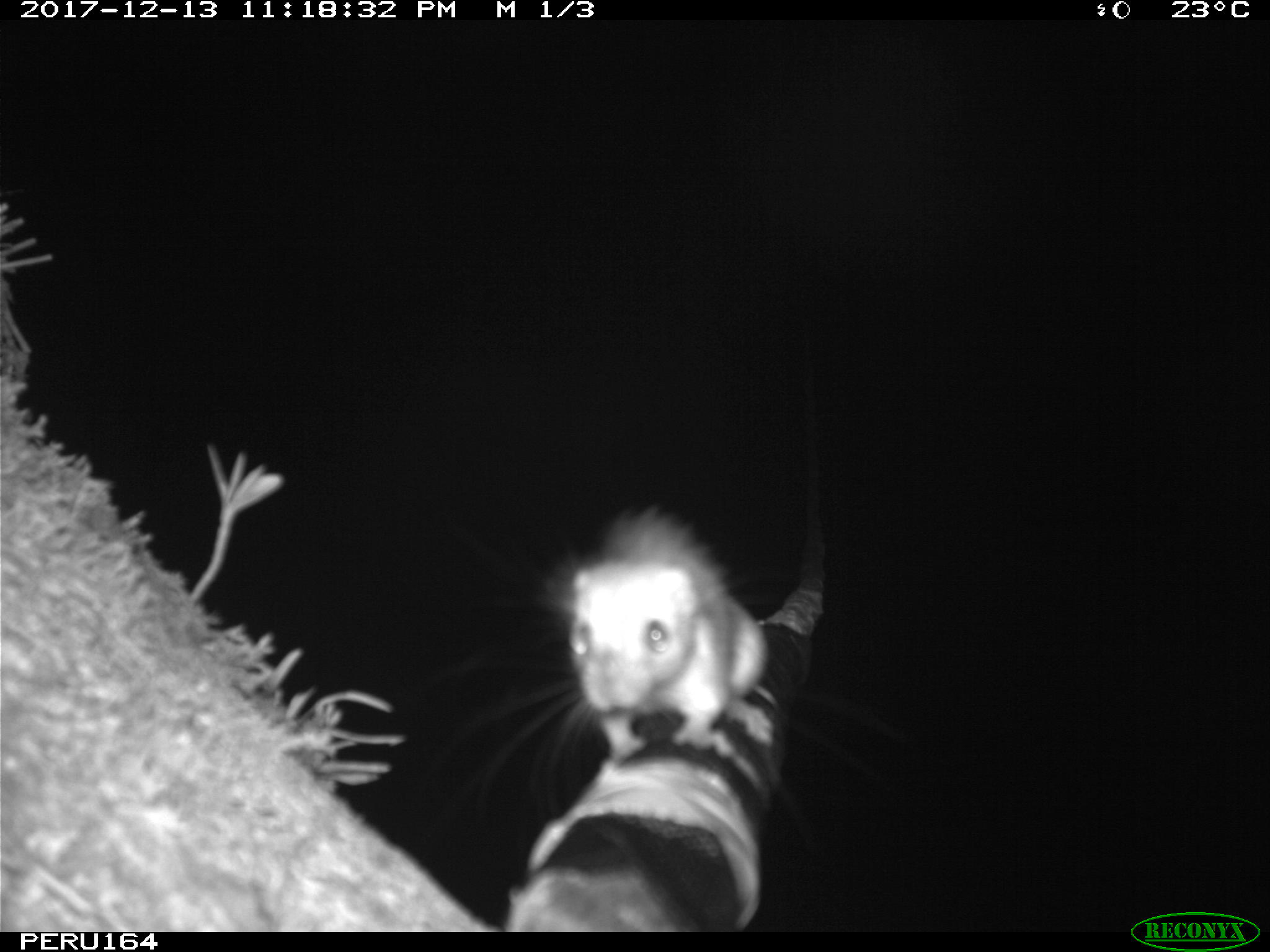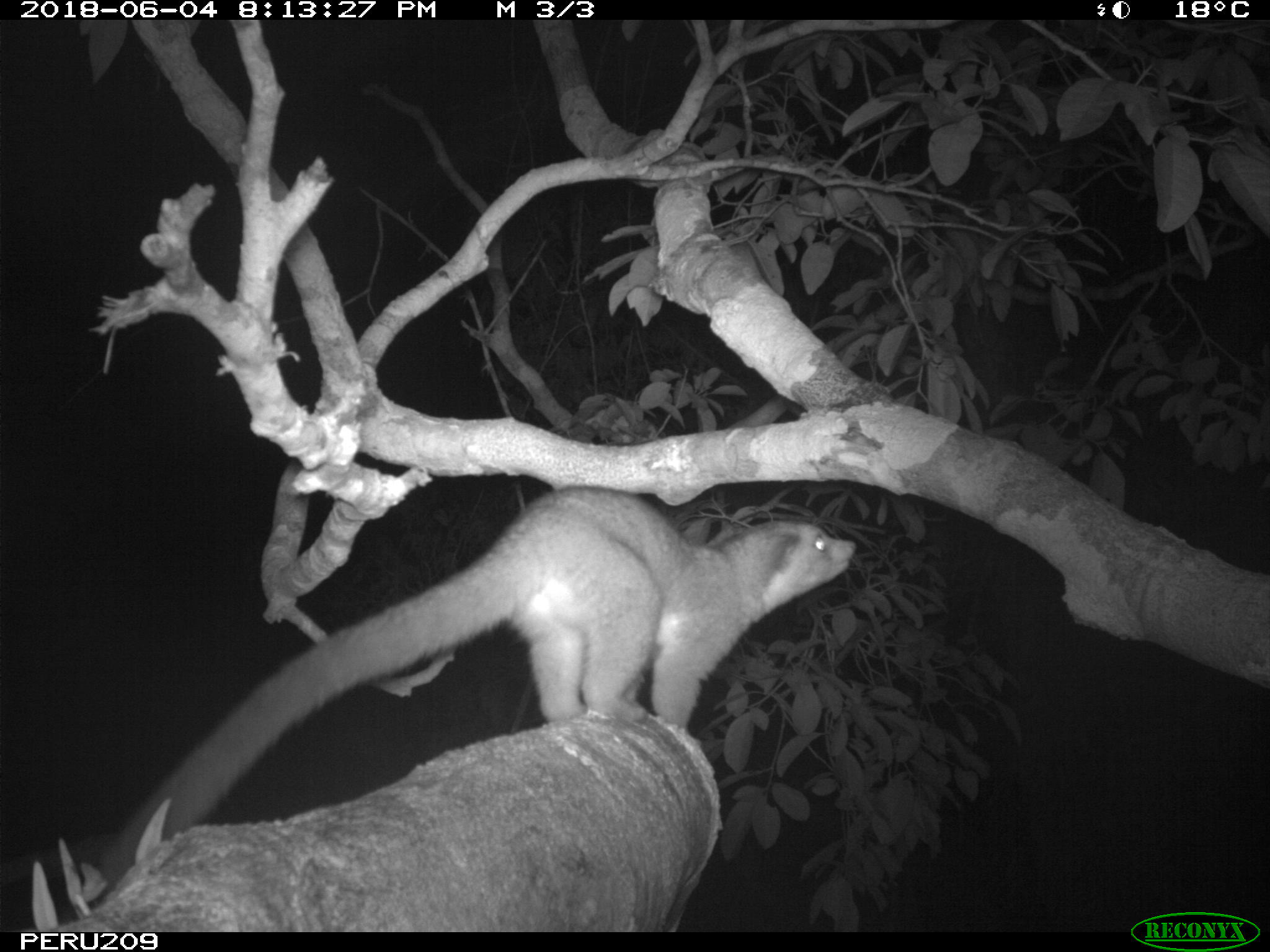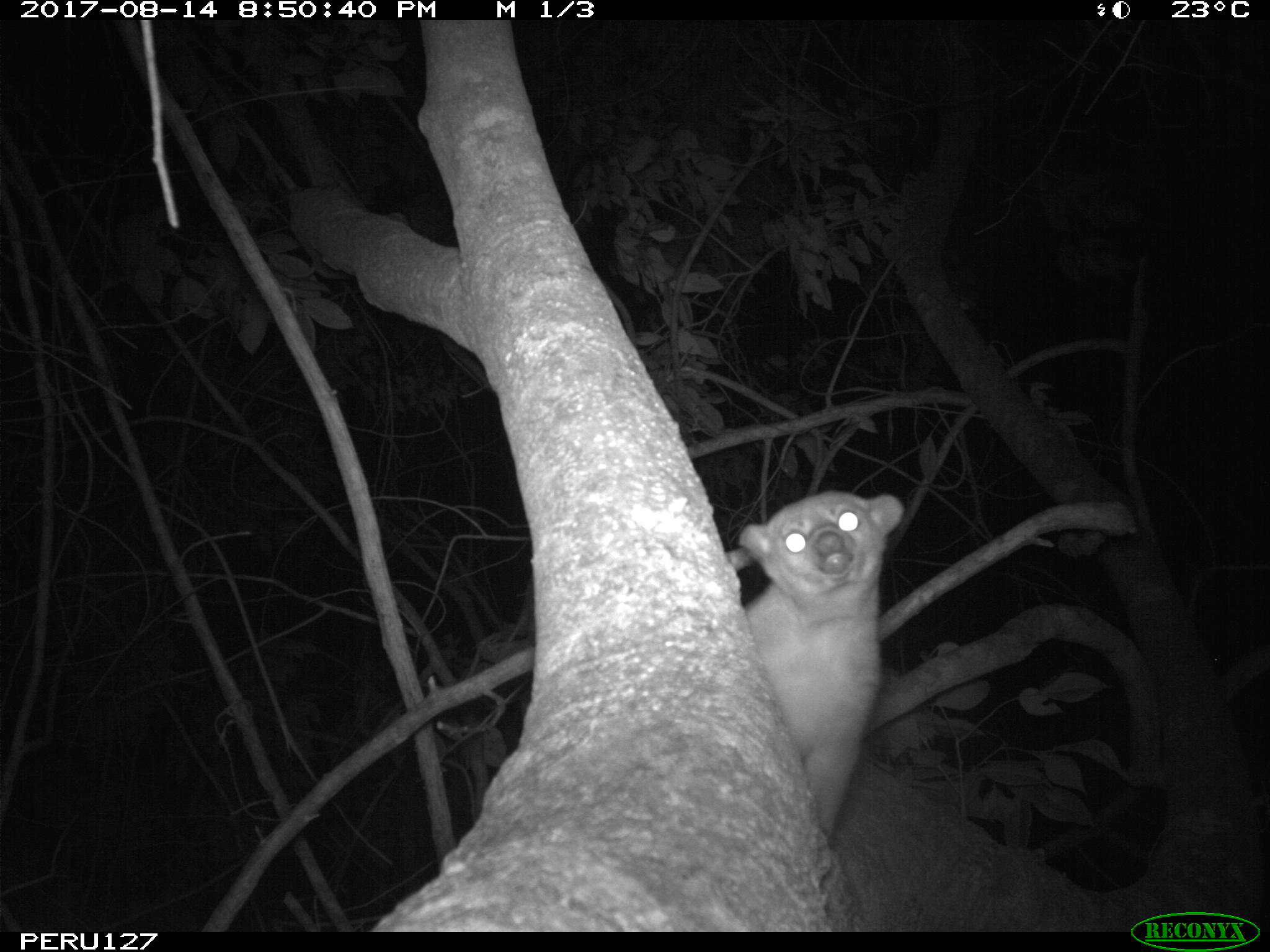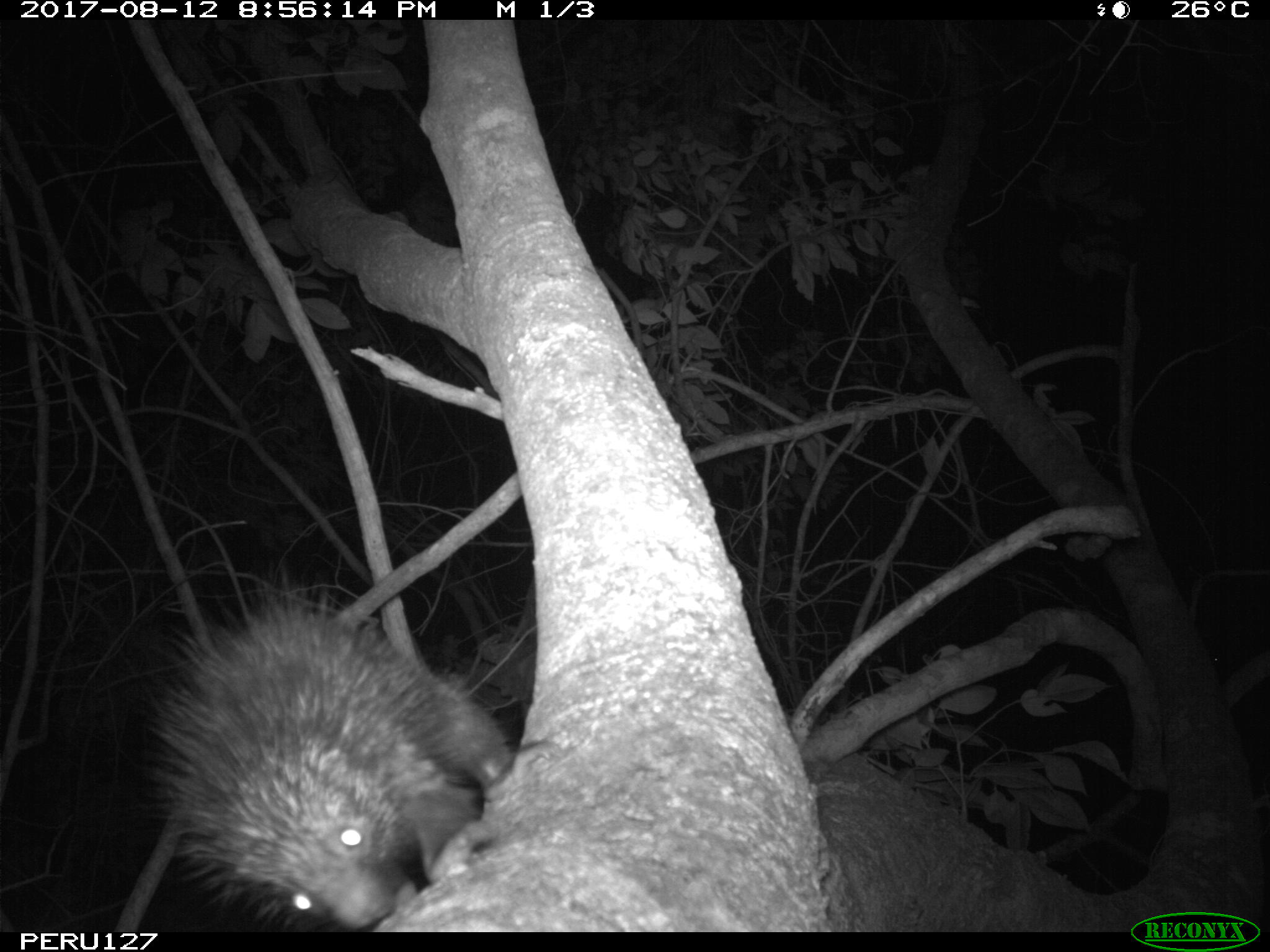Sagari Canopy Bridges Project
To reduce the impact that a natural gas pipeline right-of-way would have on canopy connectivity in the Peruvian Amazon rainforest, trees forming natural bridges connecting both sides of the forest were left standing. We’re currently monitoring those bridges using arboreal camera traps.
To build a gas pipeline through the Amazon rainforest, a long area of forest resembling a road, called a right-of-way (RoW), is cleared. The RoW is wide enough to divide a large area of forest in two, eliminating canopy connectivity and impeding movement of arboreal fauna from one side of the RoW to the other. At our study site in the Peruvian Amazon, the company building the RoW for a pipeline was asked to leave intact pairs of trees on either side of the RoW with branches that connected above the RoW. These “canopy bridges” would allow arboreal fauna to cross the RoW, mitigating the canopy connectivity impact. We set up camera traps in the bridges to monitor crossings, and collect the data every four months.
To build a gas pipeline through the Amazon rainforest, a long area of forest resembling a road, called a right-of-way (RoW), is cleared. The RoW is wide enough to divide a large area of forest in two, eliminating canopy connectivity and impeding movement of arboreal fauna from one side of the RoW to the other. At our study site in the Peruvian Amazon, the company building the RoW for a pipeline was asked to leave intact pairs of trees on either side of the RoW with branches that connected above the RoW. These “canopy bridges” would allow arboreal fauna to cross the RoW, mitigating the canopy connectivity impact. We set up camera traps in the bridges to monitor crossings, and collect the data every four months.

